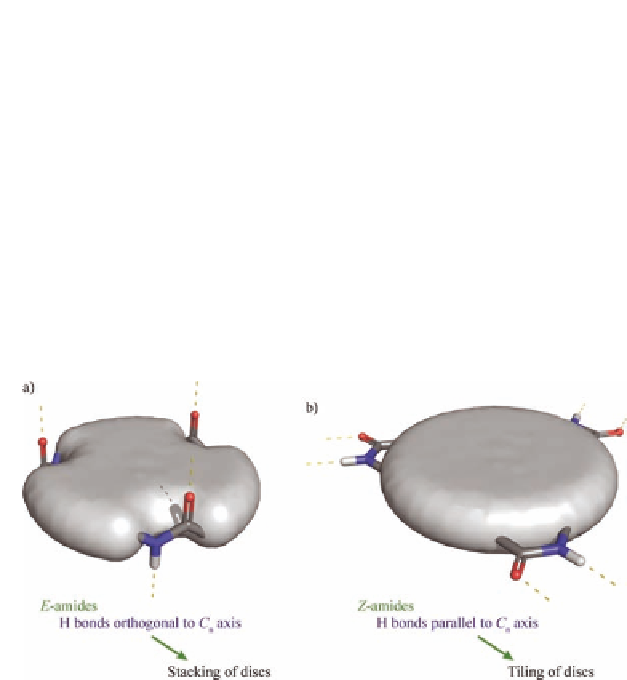Biology Reference
In-Depth Information
hydrogen bonds are oriented orthogonally to the
axis of the discs.
These can also self-assemble as curved sheets when the
C
n
Z
-amides are
not perfectly perpendicular to the
axis or when the hydrogen bonds
deviate from linearity owing to their weak directionality. Stacks and
sheets constitute important patterns that can be used in the design
of important supramolecular objects like wires, tubes, walls [35,48],
dots, spheres, and so forth, which could eventually become parts of
much more complex functional assemblies like molecular machines.
Likeachildlearningtowritehisfirstwordsandsentences,we,
like many others, have used nature as a teacher and we have tried
to unravel the most basic rules behind self-assembly of amides as
found in peptides and to use them in a predictive manner.
C
n
Figure 2.1
Nature of supramolecular objects resulting from self-
assembly of disc-shaped molecules bearing (a)
E
-amides and
(b)
Z
-amides on their edge.
2.4
Supramolecular Tubes
Theconceptthatflatring-shapedcyclopeptideshavethepotentialto
aggregate as “endless” stacks through backbone-backbone hydrogen
bondinteractionsdatesbackto1974(Fig.2.2)[49].
As early as the following year, the crystal structure of cyclo-
Ser(OtBu)-
-Asp(OMe) was published (Fig. 2.3) [50].
Although its structure consisted in the parallel packing of tubular
stacks, only half of the amides capabilities for hydrogen bonding
werefulfilled.
β
-Ala-Gly-
β


Search WWH ::

Custom Search